One of the many mysteries of Stonehenge may have been solved, not because of a scientific breakthrough or painstaking research, but after a maintenance team's hosepipe turned out to be a little short.
Archaeologists have long argued over whether the ancient monument was once a perfect circle or if it was always, as it is now, an incomplete ring.
When a hosepipe used to keep the grass green in hot spells failed to reach a broken part of the circle, unsightly brown patches began to appear. Custodian Tim Daw was fretting over the blemishes when he realised they matched the spots where stones would probably have stood if the monument had been a complete circle.
Daw said it was a "lightbulb moment". "I was standing on the public path looking at the grass near the stones and thinking we needed to find a longer hosepipe to get the parched patches to green up," he said.
"I remembered that the marks were where archaeologists had looked without success for signs that there had been stone holes. I called my colleague over and he saw them and realised their possible significance as well. Not being archaeologists, we called in the professionals.
"I am still amazed, and very pleased, that simply looking at something that tens of thousands of people had unwittingly seen, can reveal secrets that sophisticated machinery can't."
The professionals duly took charge. Aerial photographs were hurriedly commissioned before the rain could come and remove the brown patches, and the scorch marks on the western side of the Wiltshire site were mapped, and some of the brown patches indeed tallied with where stones would have stood if the circle were complete.
Other brown patches corresponded to recorded archaeological excavations, included trenches dug by the engineer William Gowland in 1901. That some of the patches matched the site of the trenches supports the theory that they indicate disturbed ground.
The patches were spotted last summer, but the conclusions have just been detailed in a report by Daw and other English Heritage staff published in the latest edition of the journal Antiquity. The report points out that, despite being one of the most intensively explored prehistoric monuments, Stonehenge continues to hold surprises. It also highlights the value of continually surveying the site from the ground and air.
Susan Greaney, senior properties historian for English Heritage, said the accidental discovery was "really significant" and added: "It shows us just how much we still have to learn about Stonehenge. It's great that people who know the site really well and look at it every day were able to spot these parch marks and recognise them for what they were."
Greaney said what might have happened to the missing stones remained a puzzle. They could have been removed and used as stone for local houses or even roads. But the lack of a decent-sized hosepipe means the idea that the circle was deliberately left incomplete can probably be discounted.
There are no plans to excavate beneath the brown marks, but English Heritage, which manages Stonehenge, may deliberately fail to water parts of the site next time there is a hot spell in case other mysteries can be solved.
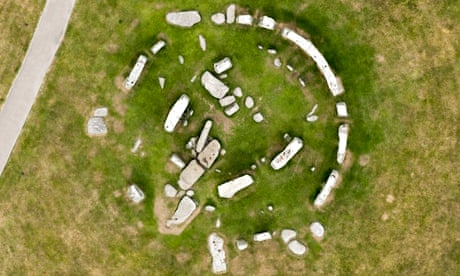



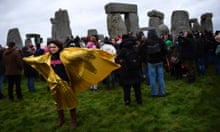


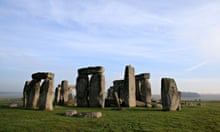

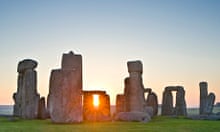
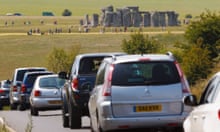
Comments (…)
Sign in or create your Guardian account to join the discussion